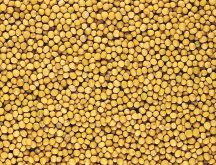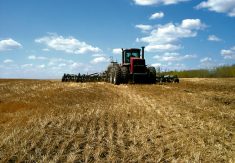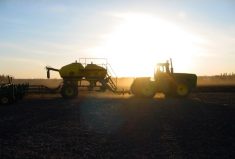The bounce-back in Canadian mustard production in 2018 is unlikely to see any follow-through in 2019 as spot prices aren’t generating much excitement for producers despite tightening supplies.
Yellow mustard is currently topping out at around 36 cents/lb., while brown mustard bids are in the 30- to 31-cent range, according to Prairie Ag Hotwire data. New-crop bids are about two cents lower on average.
“I don’t think growers are getting a lot of market signals to put mustard in the ground again this year based on current spot pricing,” said Walter Dyck, general manager with Olds Products.
Read Also

U.S. grains: Soy hits four-month high on hopes for China trade deal
U.S. soybean futures jumped to their highest level in more than four months on Monday on hopes that China will resume buying American supplies after President Donald Trump said the countries were set to reach a trade deal during his trip to Asia this week.
“At some point, someone has to come to the market,” said Dyck, noting a slight disconnect between the low spot prices and the fact that supplies were likely still on the tight side.
Canadian farmers seeded 503,800 acres of mustard in 2018, up from 385,000 the previous year and the second-largest acreage base of the past decade, according to Statistics Canada data.
“The (acreage) recovery was mainly on brown and oriental mustard, not so much on yellow mustard,” said Dyck.
Looking to 2019 planting intentions, he expected to see a rebalancing back towards more yellow acres at the expense of brown mustard. However, total mustard acreage will likely be steady to lower, given the lack of aggressive pricing signals.
While Canada remains the world’s largest mustard exporter and is known for its quality, increased production in other growing regions mean that domestic stocks that were once considered tight may no longer be so.
The U.S. has increased yellow mustard production over the past three years, and typically gets higher yields than in Canada, said Dyck. Eastern Europe is also becoming more self-sufficient on both yellow and brown mustard production.
In addition, good blending capabilities in Europe allow mustard processors there to easily bring in Russian or Ukrainian supplies when the price is right.
Looking closer to home, the release of Canada’s new food guide, with its focus on healthier eating, could conceivably bode well for mustard as a low-calorie, high-protein condiment – especially compared to mayonnaise.
However, Dyck said, “we have to remember that mustard goes on hot dogs.”
— Phil Franz-Warkentin writes for MarketsFarm, a division of Glacier FarmMedia specializing in grain and commodity market analysis and reporting.












